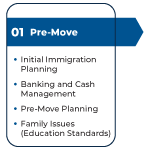Enjoy the current installment of "Weekend Reading For Financial Planners" – this week's edition kicks off with a new survey finding that, despite the turmoil of the pandemic and its disruption for the business activities (including the marketing) of advisory firms, 71% of advisors are now reporting that they have more clients than they did before the coronavirus pandemic broke out... a remarkably fast recovery and turnaround (coinciding with the sharp V-shaped recovery of the markets themselves in March), and far different from the more protracted decline and recovery that the typical advisory firm faced after the 2008-2009 financial crisis.
Also in the news this week is the latest Putnam Social Advisor study that, not surprisingly, shows a significant uptick in the advisor use of social media as traditional marketing channels have struggled (with the average advisor in the survey who uses social media reporting $7M of new assets from social media channels in 2020, up from just $2.4M on average in 2019), and the latest Schwab benchmarking survey finding that despite all the hand-wringing that small RIAs are 'doomed' and cannot compete without consolidation, that in practice the average RIA with <$100M of AUM saw slightly more revenue and client growth than larger RIAs (at 7.7% and 4.6%/year, respectively, for smaller firms, compared to 7.4% and 4.4% for larger RIAs) and had better retention (at 97.5% for small RIAs, compared to 96.5% retention rates for larger firms).
From there, we have several articles on broader industry trends, including a look at the ongoing consolidation of TAMPs (which unlike advisory firms themselves, really do appear to be in need of mergers for greater size and better economies of scale to survive), the shift in broker-dealer approaches to advisor grid compensation as advisory firms focus less on just new client production but also on the quality of service and relationships of existing clients as well (which grid payouts historically did not compensate as well), and the extent to which permanent life insurance has actually declined over the past 25 years (with insurers holding nearly 10% of household wealth in 1995, but only 4% today, while the use of mutual funds and retirement accounts have exploded upwards).
We've also included a number of tax and retirement-related articles on new government guidance, including an update on the 'simplified' forgiveness application process for small businesses that took out less than $50,000 in PPP loans, new SECURE Act guidance on everything from coordinating post-age-70-1/2 contributions and QCDs to exactly what it takes to qualify for the new "Qualified Birth Or Adoption" exception to the early withdrawal penalty, and new guidance on Pooled Employer Plans (PEPs) that may soon become available as a tool in the toolbox for advisory firms with a large number of small business owner clients.
We wrap up with three interesting articles, all around the theme of finding more energy and feeling fulfilled in our own work as advisors: the first examines why it's so important to take breaks every day (and how to structure your breaks to best maximize replenishing your energy); the second looks at the challenges of keeping up social connections in the workplace when you're in a position of leadership (i.e., "why it's so lonely at the top"!); and the last explores recent new research on financial advisors themselves and what makes us feel fulfilled (or not) at the firms we work for, where technology is now the leading frustration while growth opportunities and like-minded leadership are the biggest drivers of retention.
Enjoy the 'light' reading!










